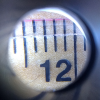- Messages
- 450

About six weeks ago I thought I'd try DE shaving. That went so well about a week ago I thought I'd try a shavette. Today my first straight razor arrived: a Kropp that could be a hundred years old. AFAIK Kropp were an everyman kind of razor in their day. No frills but reliable; made with good steel.
I've never held a straight in my hands before. It only weighs 34g and is only a little longer than my shavette. For some reason I was expecting a bigger, heavier and even slightly clumsy lump of steel. Instead I'm struck by what a beautiful piece of design it is. A solid spine curving into a thin, almost delicate blade which makes a high-pitched ringing noise when tapped. More like a precision scalpel than the face-axe I was expecting.
Sometimes you pick up a good tool and it just feels right. Perfectly-designed for the job at hand. I haven't shaved with it yet so maybe that's all just my imagination. We'll see.
I'm tempted to dismantle it completely to give it a good clean. Could be nice to make new scales. I do have a chunk of walnut lying around...
The blade is in good condition overall but it looks like I'll have to bread-knife the edge back about half a millimetre or so to clear some pitting.
Unfortunately that also takes me into a larger area of corrosion on one side of the blade which is too big to remove. I'll just have to see how it goes. Hopefully it's only a surface blemish.
The moral of the story: if you buy from ebay don't be afraid to ask for good photographs of the edge area, on both sides. Pitting closer to the spine is just cosmetic but pitting near the edge could make it impossible to hone the blade.
I'll keep a record here of what I buy, the work I do, and how I get on with learning some new skills (honing, stropping, shaving with a straight). Maybe it'll be useful to anyone else thinking about taking up danger shaving.
So far:
Kropp "made & ground in Sheffield" £19
Loupe x30 + x60 £6 from Amazon
The loupe will help to see what I'm doing to the edge of the blade when I try to hone it. It almost certainly isn't as powerful as advertised but then it probably doesn't need to be.
Next up: I need to figure out what to use to grind & hone. I've already got some wet/dry (silicon carbide) paper from P180 up to P1000 (about 500 grit). I think I can use that - on a *very* flat surface - to take the edge back a little. After that, I might try some lapping film from a 1k grit equivalent (about 9 micron?) all the way up to strop-ready with a 0.5 micron film. I'd maybe have to spend £12 or so for a set of lapping film sheets.
If the budget option doesn't work I'll need to buy some stones...







